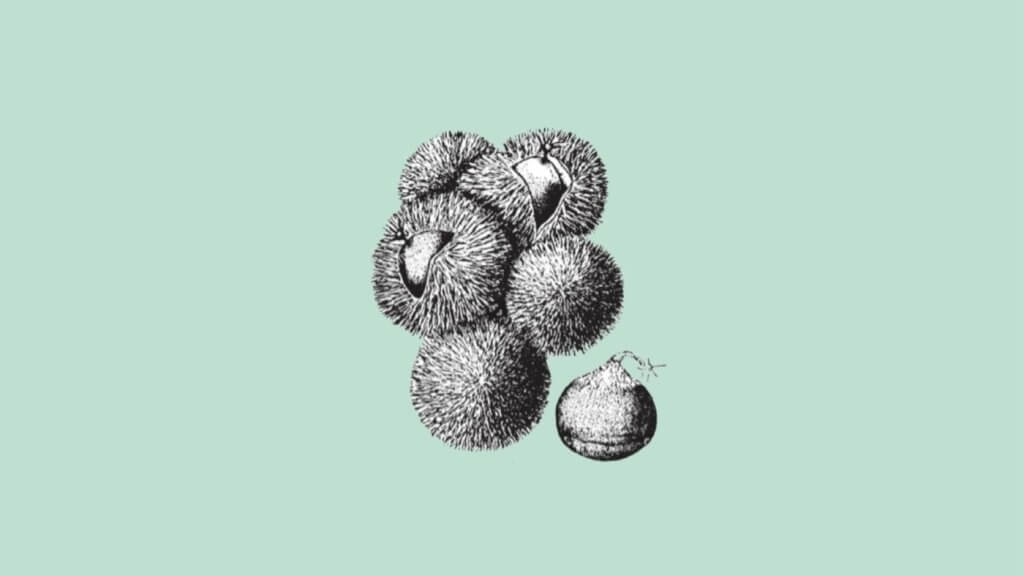Castanea pumila or dwarf chestnut (Allegheny chinquapin) is considered a small tree or shrub. This perennial native chestnut species grows in the southeastern United States. It produces a fruit in the form of an edible nut found inside a bristly bur.
Castanea pumila plant profile
Other common names for Castanea pumila include:
- Allegheny chinkapin
- Chinquapin
- American chinquapin
- Dwarf chestnut
The terms chinkapin and chinquapin are used interchangeably, depending on the region.
Castanea pumila is considered a small tree or shrub, growing between 12-36 feet high. It is multi-stemmed with erect upper branches and spreading lower branches.
What Are You Foraging For Right Now?
We're thrilled to hear your ideas. What would you like to submit today? Feel free to share your thoughts and experiences with us.
The leaves are dark green and tapering. Flowers are long and spiky, blooming from May to July. A single nut grows inside the prickly husk, which is edible and similar to a chestnut.
They make excellent shade trees and provide food for animals. They are moderately resistant to deer and act as a larval host for insects such as butterflies.
These native plants prefer dry, acidic soils, which are well draining. It requires at least six hours of full sun each day and has a slow to the moderate growth rate.
These trees are susceptible to chestnut blight, a disease that can rapidly kill the plant and infect nearby trees.
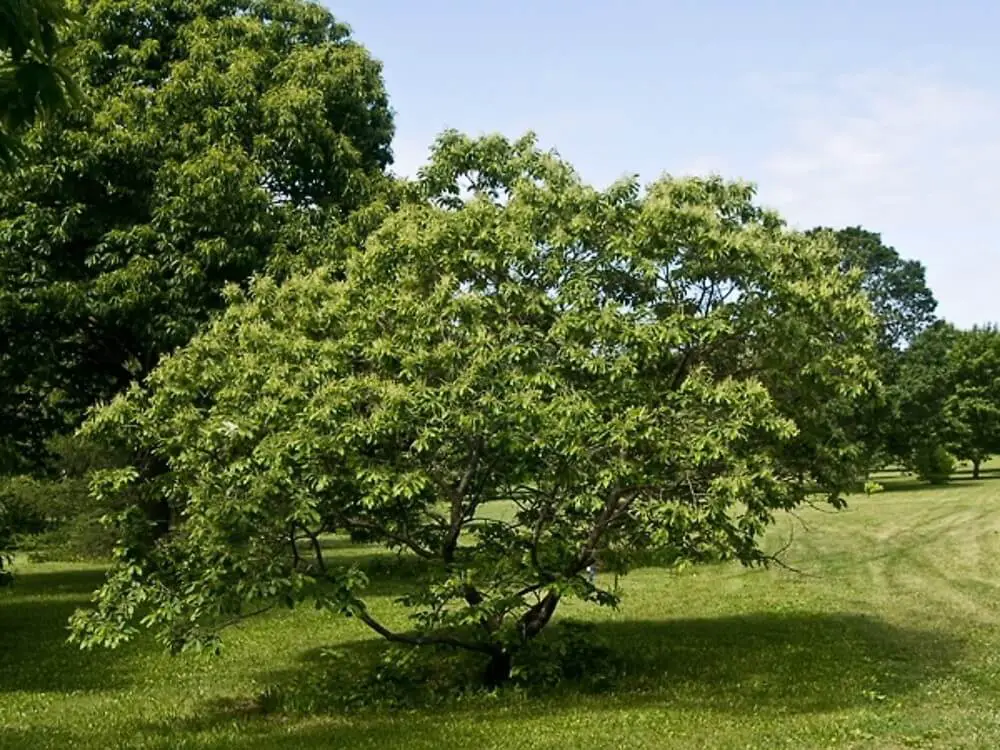
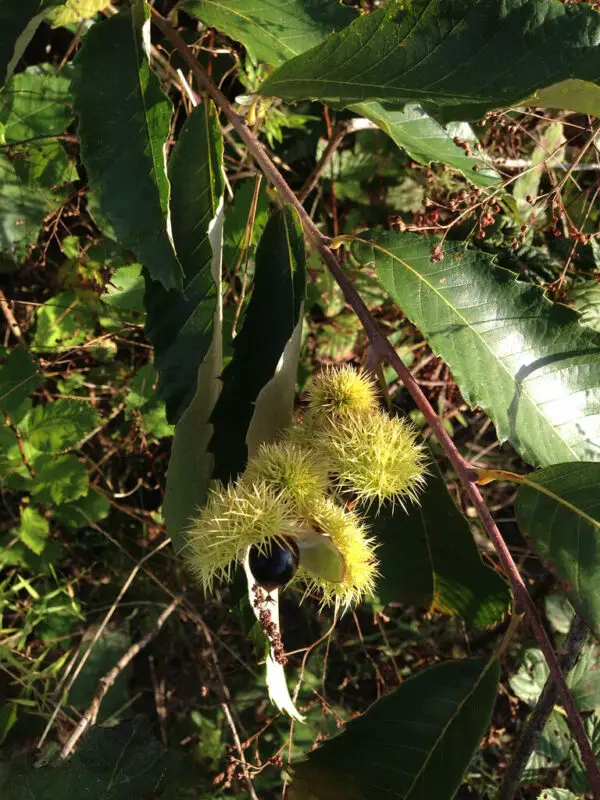
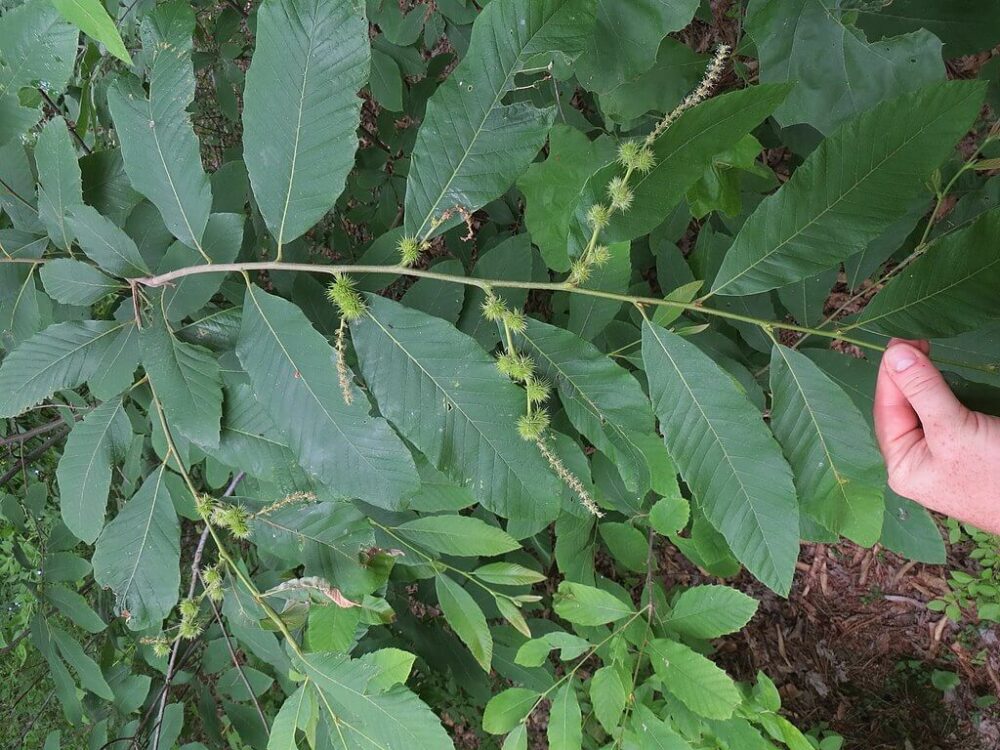
Where does the Allegheny chinkapin grow?
Castanea pumila is native to North America, growing best in USDA hardiness zones 6-10.
They grow as far north as New Jersey, west to Texas, north to New York, and south to Florida.
They are most widespread throughout Georgia and South Carolina in the Piedmont regions, the southwest area of Virginia, and the western side of North Carolina.
They are found along coasts, deciduous forests, thickets, sandy hills or ridges, and in low mountain ranges.
Allegheny chinkapin is difficult to find due to nearly being wiped out in the early 1900s. A widespread chestnut blight killed billions of these trees in North America.
Allegheny chinkapins weren’t as badly affected, but the loss was still devastating.
How to identify the Allegheny chinkapin?
- The bark of the Allegheny chinkapin is light brown with a reddish tint. The scales are loose and plate-like.
- They contain alternating leaves that grow 3-5 inches long. They are oblong-shaped and have toothed edges.
- The leaves are bright green on top and covered with a carpet of wooly hairs underneath. They turn a bright yellow in the fall.
- Castanea pumila is a monoecious species containing male and female flowers on the same plant. Both flowers are white to pale yellow and are known for giving off an intense scent.
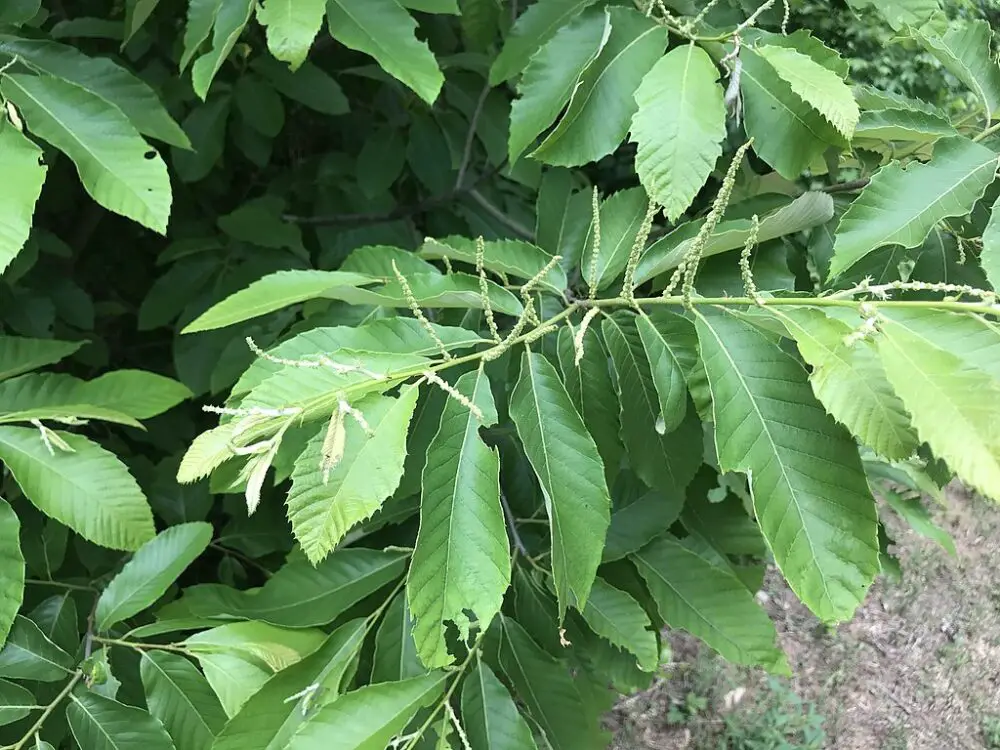
How does Castanea pumila differ from other chinkapin trees?
Chinkapin refers to any of the species of trees in the Fagaceae family, which includes chestnuts, beeches, chinkapin oaks, and evergreens. It has eight genera and close to 1,000 species.
Chinkapins belonging to the genus Castanea are similar to one another. Other varieties of chinkapin trees include the Alabama chinkapin and Ozark chinkapin. All have alternating leaves, unisexual flowers, and fruit in the form of a nut.
It is also closely related to the American chestnut tree.
Yet there are differences:
- Grows smaller in height than the American chestnut
- Its nut is half the size and fully round; American chestnuts have a flat side
- The bur-like husk contains one nut vs. three
- The leaves are smaller, with less distinct toothing on the edges
- The leaves are more furry underneath
Can you eat Chinkapin nuts?
Yes, you can eat the nuts of Allegheny chinkapin, and it was once quite common.
The first record of the nut came from Captain John Smith in 1612 when he wrote: “They [Native Americans] have a small fruit growing on little trees, husked like a Chestnut, but the fruit most like a very small acorne. This they call Checkinquamins, which they esteem a great daintie.”
However, since the time of the chestnut blight, which nearly decimated them, there is the argument they should not be over-harvested.
It is encouraged to forage sparingly to allow them to continue establishing themselves.
Conservation isn’t the only reason Allegheny chinkapin nuts are less common.
Other reasons include:
- Animals eat them first
- Seeds are small and difficult to handle
- Since the blight, we now import enough chestnuts from other countries
- Seeds often germinate before falling to the ground
- Not economical to process large quantities
- Uneven ripening
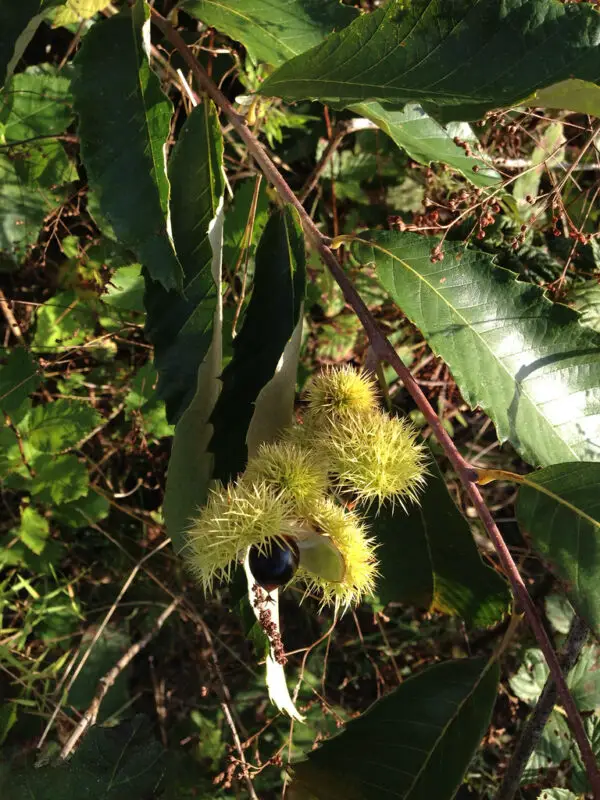
How to use chinkapin nuts in the kitchen
When foraging for chinkapin nuts, you want to be certain they are ripe. This occurs between August and October, depending on the climate. The nuts are ready when they are starting to dry and just beginning to split open.
The nut is inside a prickly, burry husk which makes removing the nut difficult.
Using gloves, try to pry open the crack and remove the shiny, brown nut. Removing the bur from the tree is what prevents new growth.
Chinkapin nuts can be eaten raw, boiled, dried, or roasted.
Their flavor is sweet and nutty.
To roast chinkapin nuts:
- Remove bristles but leave the shell on
- Place in a 350-degree F oven
- Nuts are done when shells begin to open
They can also be ground and added to flour or coffee or used as a replacement in any recipe calling for chestnuts, such as stuffing or soups.
Rachel Schmeltzer is a writer, mom, teacher, and dreamer. She enjoys reading, traveling, history, spending time with her boys and her cats, and foraging in the woods of Minnesota.

